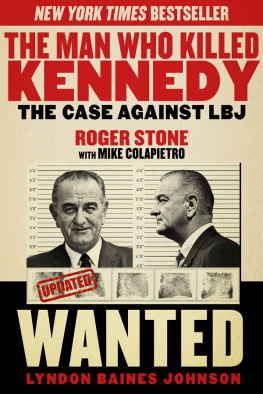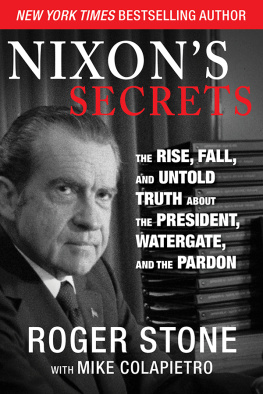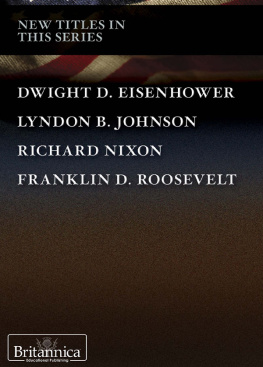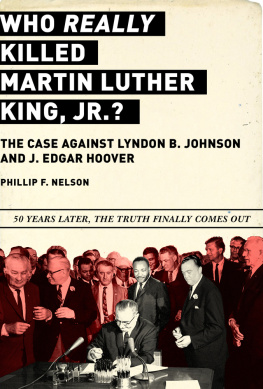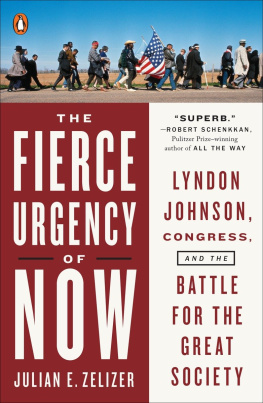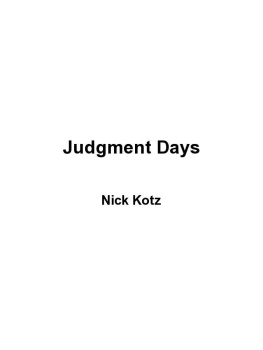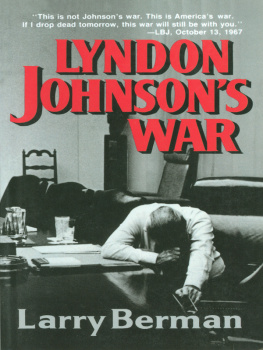Copyright 2013 by Roger Stone with Mike Colapietro
All Rights Reserved. No part of this book may be reproduced in any manner without the express written consent of the publisher, except in the case of brief excerpts in critical reviews or articles. All inquiries should be addressed to Skyhorse Publishing, 307 West 36th Street, 11th Floor, New York, NY 10018.
Skyhorse Publishing books may be purchased in bulk at special discounts for sales promotion, corporate gifts, fund-raising, or educational purposes. Special editions can also be created to specifications. For details, contact the Special Sales Department, Skyhorse Publishing, 307 West 36th Street, 11th Floor, New York, NY 10018 or .
Skyhorse and Skyhorse Publishing are registered trademarks of Skyhorse Publishing, Inc., a Delaware corporation.
Visit our website at www.skyhorsepublishing.com.
10 9 8 7 6 5 4 3 2 1
Library of Congress Cataloging-in-Publication Data
Stone, Roger J.
The man who killed Kennedy : the case against LBJ / Roger Stone, with Mike Colapietro.
pages cm
Includes bibliographical references.
ISBN 978-1-62636-313-7 (hardcover : alk. paper) 1. Kennedy, John F. (John Fitzgerald), 1917-1963--Assassination. 2. Johnson, Lyndon B. (Lyndon Baines), 1908-1973. 3. Conspiracies--United States--History--20th century. I. Colapietro, Mike. II. Title.
E842.9.S74 2013
973.923092--dc23
[B]
2013029015
Cover design by Brian Peterson
Cover photo credit: Public Domain
Paperback ISBN: 978-1-62914-489-4
Ebook ISBN: 978-1-63220-040-2
Printed in the United States of America
To my beloved wife, Nydia Bertran Stone, who has suffered through my political enthusiasms, victories, and defeatsall with good humor and steadfast support.
CONTENTS
PREFACE
I recognize that those who question the governments official contentions regarding the assassination of John F. Kennedy are labeled by many in the mainstream media as nuts, kooks, and worse. Yet the events of November 22, 1963, have haunted and interested me since the timeas an eleven-year-old boyI saw the indelible image of John-John saluting his fathers flag-draped coffin and wept. My family is Catholic and, although Im sure my Republican parents voted for Richard Nixon in 1960, they were still proud of our first Roman Catholic president.
I realize that delving into the world of assassination research and a belief in a conspiracy will lead some to brand me as an extremist or a nut, but the facts I have uncovered are so compelling that I must make the case that Lyndon Baines Johnson had John Fitzgerald Kennedy murdered in Dallas to become president himself and to avert the precipitous political and legal fall that was about to beset him.
I feel that I am uniquely qualified to make the case that LBJ had John F. Kennedy killed so that he could become president. I have been involved in every presidential election since 1968 with the exception of 1992, when I sat out Republican efforts and George H. W. Bushwho, as a Reaganite myself, I never had much regard for anywaywent down to ignominious defeat. I first met the then former Vice President Richard Nixon in 1967. In 1968, I was appointed chairman of Youth for Nixon in Connecticut by Governor John Davis Lodge. I later attended George Washington University in Washington, DC by night and worked in the Nixon White House press operation by day. In 1972, I was the youngest member of the senior staff of the Committee to Re-elect the President (CREEP).
Ambassador John Davis Lodge was the brother of JFKs ambassador to Vietnam, Henry Cabot Lodge. John Davis Lodge was a congressman and a member of the House Foreign Affairs Committee. He was also governor of Connecticut, Eisenhowers ambassador to Spain, Nixons ambassador to Argentina, President Ronald Reagans ambassador to Switzerland, and my mentor.
It was John Lodge who introduced me to former Vice President Richard Nixon when I was sixteen years old in 1968. Lodge was an old school Brahmin who nonetheless spoke Spanish, Italian, French, and German. He enjoyed a brief career as a B-movie actor in Europe, appearing onscreen with Marlene Dietrich and Shirley Temple.
When Lodge was in his eighties, he served vigorously as the chairman of Ronald Reagans campaign for President in Connecticut, a post I had recruited him for as the Northeast regional director.
In 1979, we sat in his Westport, Connecticut, home enjoying a cocktail. I knew that JFK had planned to fire ambassador Henry Cabot Lodge upon his return from Dallas on November 24, 1963. I also know that Lodge knew why he had been summoned to see the President.
Lodge had done Kennedys dirty work coordinating a campaign with the CIA to assassinate Catholic Vietnamese President Diem. I couldnt resist asking John Lodge about his brother.
Did you ever ask your brother who really killed Kennedy? I said.
His lips spread in a tight grin. Cabot said it was the Agency boys, some Mafiosi. He looked me in the eye. And Lyndon.
Did your brother know in advance? I asked.
Lodge took a sip of his Manhattan. He knew Kennedy wouldnt be around to fire him. LBJ kept him at his post so he could serve his country.
Seven weeks before the JFK assassination, Richard Starnes for the Washington Daily News wrote an article titled Spooks Make Life Miserable for Ambassador Lodge and subtitled Arrogant CIA Disobeys Orders in Viet Nam. The article slammed the CIAs role in Vietnam as a dismal chronicle of bureaucratic arrogance, obstinate disregard of orders, and unrestrained thirst for power. The article went on to chronicle the turf war between US Ambassador Henry Cabot Lodge and the CIA. Twice the CIA flatly refused to carry out instructions from Ambassador Henry Cabot Lodge, according to a high United States source here. The article continued: If the United States ever experiences a Seven Days in May it will come from the CIA, and not from the Pentagon, one U.S. official commented caustically. Seven Days in May was a prescient book, read and endorsed by JFK, that gave a fictional chronicle of an attempted military coup in America. John Kennedy was so impressed by that book and its message that he even let them film the movie adaption at the White House while he was away one weekend.
The Starnes source ominously referencing Seven Days in May was probably from someone in the military, and not Lodge, but it is nonetheless significant. Another source told Starnes They [CIA] represent a tremendous power and total unaccountability to anyone. Starnes continued: Coupled with the ubiquitous secret police of Ngo Dinh Nhu, a surfeit of spooks has given Saigon an oppressive police state atmosphere.
The Starnes article was a caustic and detailed denunciation of the CIAs authoritarian behavior in Vietnam and its uncontrollability by the Kennedy Administration. One very high American official here, the article continued, a man who has spent much of his life in the service of democracy, likened the CIAs growth to a malignancy, and added he was not sure even the White House could control it even longer.
That last quote probably came out of the mouth of Ambassador Henry Cabot Lodge.
The next day on October 3, 1963, Arthur Krock, a columnist for the New York Times and a close friend of the Kennedys, wrote a column The Intra-Administration War in Vietnam that was based on the Starnes article. The Krock column featured those incendiary quotes that Richard Starnes had collected about the CIA from their opponents in the State Department and the Pentagon. The CIA wanted to keep the Diem-Ngu regime, and the bitter enemy of both the CIA and Diem was Vietnam Ambassador Henry Cabot Lodge who was the point man in the Kennedy Administration for getting rid of Diem and Ngu.

